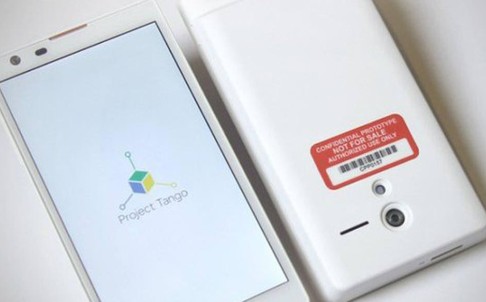3-D tracking technology for mobile phones being studied at Google
Google works on mobile technology that would allow indoor mapping or help the blind navigate
PUBLISHED : Friday, 21 February, 2014, 10:26pm
UPDATED : Friday, 21 February, 2014, 10:26pm
Agence France-Presse in San Francisco

Google hopes outsiders will write apps for its new device.
Google has announced a research project aimed at allowing smartphones to track users' surroundings in three dimensions.
Its potential applications include indoor mapping, gaming and helping blind people navigate, Google said.
The company said "Project Tango" would provide prototypes of its new smartphone to outside developers to encourage the writing of new applications.
Project leader Johnny Lee said the goal of the project, which incorporates robotics and vision-processing technology, was "to give mobile devices a human-scale understanding of space and motion".
"What if you could capture the dimensions of your home simply by walking around with your phone before you went furniture shopping?" Google said.
"What if directions to a new location didn't stop at the street address? What if you never again found yourself lost in a new building? What if the visually impaired could navigate unassisted in unfamiliar indoor places? What if you could search for a product and see where the exact shelf is located in a superstore?"
The technology could also be used for "playing hide-and-seek in your house with your favourite game character, or transforming hallways into a tree-lined path".
Smartphones are equipped with sensors which make over 1.4 million measurements per second, updating the position and rotation of the phone.
Partners in the 3-D project include researchers from the University of Minnesota and George Washington University in the United States, German technology firm Bosch and the Open Source Robotics Foundation. Another partner is California-based Movidius, which makes vision-processor technology for mobile devices. It will provide the processor platform.
Movidius said the goal was "to mirror human vision with a newfound level of depth, clarity and realism on mobile and portable connected devices".
"Google has paved the future direction for smart mobile vision systems and we're excited to be working with a company that shares our vision to usher in the next wave of applications that fundamentally alter how a mobile device is used to experience the world around us," said Movidius CEO Remi El-Ouazzane.
